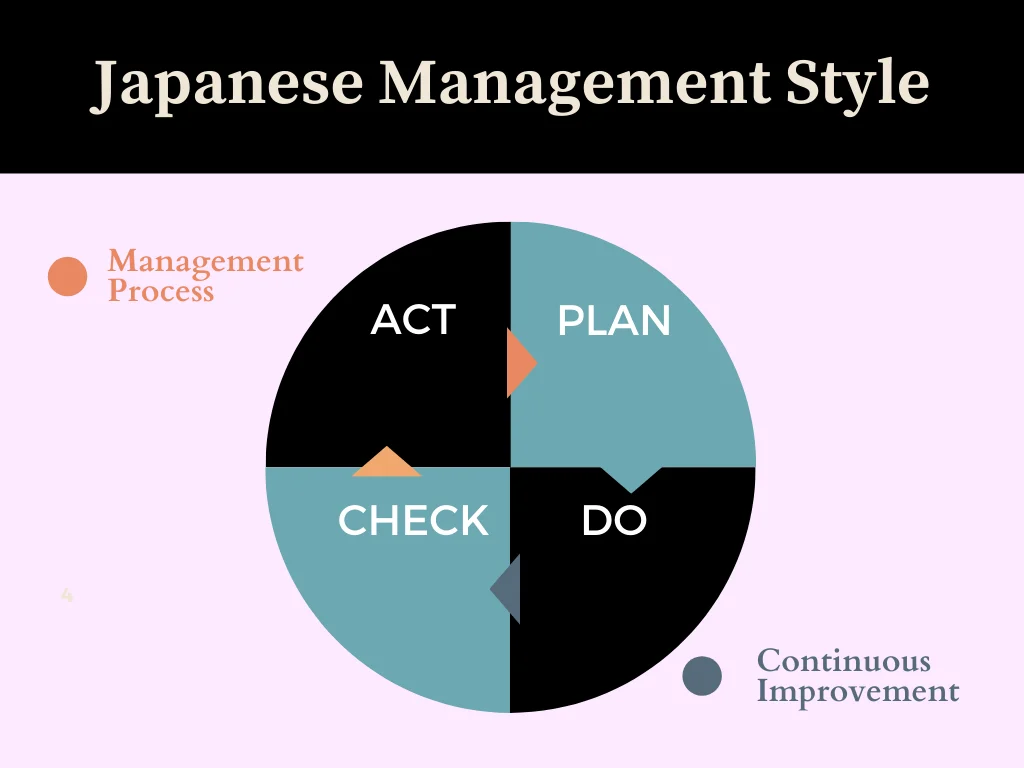Management styles vary by company, level of management, and even from person to person. Let us see the different management styles practised in different parts of the world for your better understanding.
The managerial practices in Asian countries like Japan, China and India are quite different from that of economically advanced countries in the west.
Industrial nations are in a position to adopt managerial approaches that suits their mode of operations and nature of labor force.
In Asian countries, a paternalistic or participative leadership style is followed while directive style of leadership pattern suits the west. Basically, this difference arises due to the cultural background of people influenced by their tradition.
East Asian countries like Japan have a set of cultural norms that cannot be overlooked or sacrificed for the sake of business.

Their cultural instincts are very strong and they believe in life long employment. Japanese management practice lays emphasis on seniority and shows great concern for each and every employee.
The objectives are set by the lower level employees and it is passed on to the top level management for approval.
These proposals are scrutinized by the supervisors who tactfully suggest the necessary changes, instead of simply accepting or rejecting the proposed objectives.
This creates a sense of belonging and the employees identify themselves with the goals of the company.
You cannot assure that a participative style of decision making always proves beneficial. Sometimes, managers have to show their individualism by taking tough decisions, when the situation warrants for such an action.
Here the leader also becomes the firm decision maker. This is quite common in the west, where the leaders identify themselves with the profession rather than the company.
Such solo decision making sometimes result in sub-optimal decisions. We are not going to compare and contrast between the various management approaches and which is better.
The discussion aims at throwing light on different approaches and styles of management and how it affects the productivity of an organization.
Japanese management relies on collective decision making (consensus), where the decision making might take time, but it is implemented quickly.
The Japanese management is highlighted in this discussion to demonstrate the effectiveness of their approach which is followed by many western nations to ensure success.
The novelty is in the fact that they treat people as human beings and not just another factor in production. The communication flows from bottom to top and back.
Care is taken to define the problem with clarity before going for a decision. In the west, managers are criticized to come to conclusions even before defining the problem.
Bureaucracy still prevails in most of the Asian countries hindering the progress of business communities. What started as an amazing administrative legacy has now turned authoritarian.
Even if the employee knows what the manager says is incorrect; he has to obey the instructions, just because it is issued by his superior. The people are expected to follow the instructions provided and not to question or suggest.
Collective responsibility and accountability, an informal organizational structure, common organizational culture and competitive spirit makes participative management approach distinct and successful.
When the leader acts as a facilitator and not a dictator, naturally the employees will try to give their best shot.
Collective responsibility might sometimes lead to ambiguity of decision responsibility. But individual responsibility and accountability vouches for clear and specific decision responsibility.
Quality control circle is another feature that distinguishes Japanese management from others.
Workshops are organized in a periodic fashion to arrive at solutions for problem situations, be it worker welfare, bottlenecks or interpersonal skills.
The focus is on group performance and peers help one another in enhancing the performance and thus increase the overall productivity.
Firms must carefully choose a management style that caters to the needs of future requirements of the company and the one that satisfies their strategic goals.